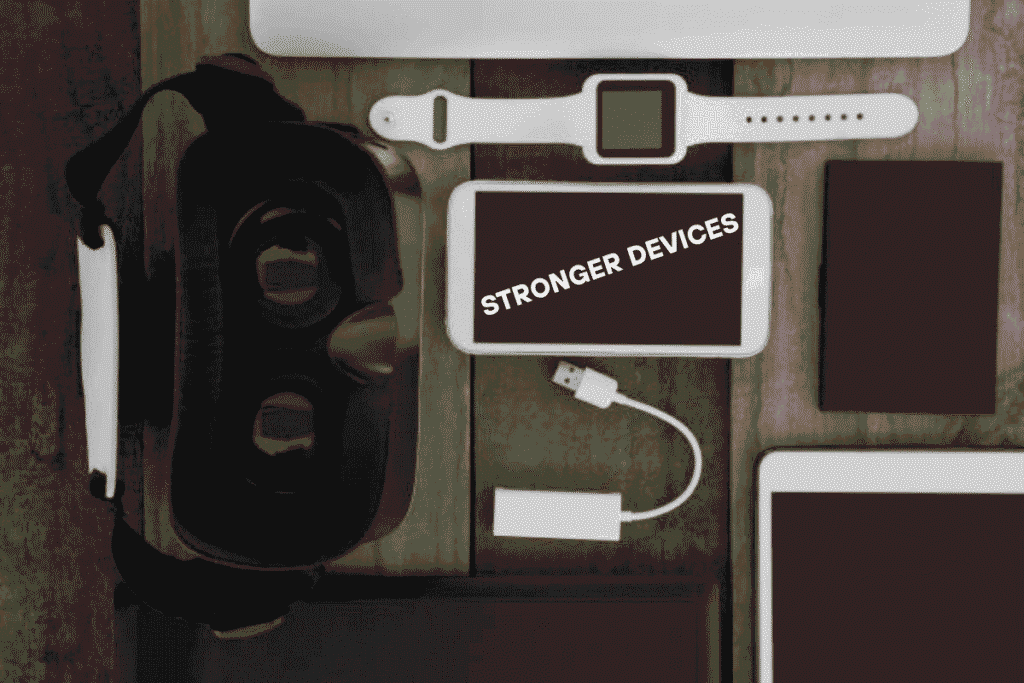
Hello people! What are the NYT’s 2025 smartphone buying tips and trends? Even as consumer needs change and innovations grow, the smartphone market remains an exciting area of technology. Experts, industry leaders, and the New York Times’ transparent reporting have agreed that consumer preferences, bold technological advancements, and economic patterns will shape this year.
Although I could not find a single article predicting “Top 2025 Smartphone Buying Trends” in 4000 words, a review of their coverage and wider industry insights reveals what will likely influence smartphone purchasing decisions for the following year.
Let’s dive in!
Table of Contents
AI AI Smartphones Go Beyond Trend

There is actual value in integrating artificial intelligence so deeply into smartphones; this is the most crucial trend in 2025. It’s not just changing how users communicate with voice assistants; on-device AI is generally changing how mobile devices work. The New York Times has regularly noted that AI is becoming increasingly advanced, as evident in the 2025 edition of the iPhone.
Don’t limit yourself to using Siri or Google Assistant, the traditional way to get answers.
AI to Proactively Predict Our Needs in 2025
Imagine if your phone arranged your day around traffic and the weather, rescheduled your appointments as needed, and prepared emails and messages that sounded like you. Both Google and Apple are at the forefront of this development, with Google incorporating Gemini more deeply into Android and Pixel, and Apple utilising “Apple Intelligence” made possible by advanced models. Thanks to AI on your phone, it will understand your rhythms, know what you require, and manage your online life with greater independence, turning your phone into a real assistant.
AI Drives Phone Camera Innovation
While the megapixel count remains a top feature for many, computational photography is expected to amaze us in 2025. AI techniques will run smoothly and help with automatic scene optimisation, superior low-light photography, and advanced smartphone photo editing tools. Over time, real-time object detection, innovative setup tools, and generative AI will become standard, making professional photography more accessible to all users.
- AI is being increasingly implemented onn devices to enhance privacy and improve system performance. Now, AI tasks will be done on the powerful chipsets within the phone rather than being sent to the cloud. As a result, AI functions are faster, and the need to think about privacy protection is rising.
- The New York Times has consistently emphasised that data privacy is crucial, and on-device AI addresses this demand, providing enhanced security and reducing the time required for AI computations.
Foldables evolve into practical devices
Smartphones that can fold, until recently rare and expensive, are set to grow much larger in 2025. Even though their share of the smartphone market has historically been very low (below 2%), investing funds in research and gaining a better understanding of consumer needs is making them more appealing to people.
Ragged hinges and creasing screens were the main problems with early foldable phones. By 2025, better-quality displays and improved hinges are expected to result in fewer visible creases and more reliable products that withstand everyday use more effectively. Today’s designs have thinner profiles and use lighter materials.
Inward-Folding Designs Ensure Screen Safety
Users like foldable phones mainly because their extra-large screen allows them to use multiple applications and enjoy media, while the phone remains soft and easy to carry. By 2025, future5, future software will enable devices to transition smoothly between closed and os. People will find it easier to manage two applications at once, realise better integration of applications when using different screens, and have a familiar tablet interface when the device is open, making these gadgets great for both working and enjoying media content.
- Being available at a high price point is a concern for foldables currently, but with increasing competition and advancements in manufacturing, ASPs are expected to decline over time.
- As foldables become more affordable, more people will choose them, and they will no longer be just luxury devices. New players, expected to be joined by an Apple foldable in late 2025 or early 2026, could result in better pricing and more innovation in the global smartphone industry.
Being Green Makes a Difference: The Modern Buyer
As more people pay attention to the environment, The New York Times has reported that sustainable products are becoming increasingly widely used across multiple fields. Smartphone buyers are increasingly considering this trend when shopping in 2025. They expect manufacturers to make powerful products that respect the environment. Businesses creatingg smartphones are starting to incorporate recycled plastics and rare earth materials into the manufacturing of their devices. Along with the device, companies are working towards making their packaging recyclable and compostable.
Smartphones Should Be Reliable, Repairable, Sustainable
Many people consider a company’s environmental information before making a purchase. Sustainable phones are made for users who want their phones to last. In 2025, citizens will be more eager to get devices that continue to receive software support and can be easily repaired via spare parts. The global growth of the “right to repair” movement will encourage manufacturers to design their devices for repair, thereby reducing the likelihood of them ending up in landfills.
Cameras Matter Beyond Megapixels

Although AI plays a significant role in improving smartphone photos, the quality of the hardware matters. By 2025, buyers will primarily choose their cameras based on sensor technology, extended zoom, and innovative features
Improved Night Modes
The latest phones feature larger sensors, which produce significantly better results when shooting in low light. You can capture better, sharper, and more vivid pictures without a significant light source. The new advancements in hardware can be further improved by computational photography, which all starts with excellent sensors.
What separates smartphones is their ability to zoom in without much quality loss. Source: https://observer.com/2022/03/samsung-foldables/ This feature enables people to take clear photos of distant objects.
- Enthusiastic photographers will find that 2025 smartphones will have advanced manual controls for aperture, shutter speed, and ISO. Cinematic modes, 8K recording ability, and improved stabilisation will help mobile devices sell, thanks to the boom in people making videos on smartphones.
- While most are still nascent ideas, certain manufacturers are considering modular camera setups that allow you to use professional lenses with your smartphone, effectively combining them with a dedicated camera.
- Although not popular in 2025, the main improvements in advanced optics and integration of computing will strengthen the key features of smartphone cameras.
- Charging is essential because a modern phone demands energy.
- With smartphones continually improving, users remain primarily concerned about the longevity of their devices In 2025, better batteries and faster charging will remain important when people shop for cars.
Power Efficiency:
A phone’s performance drops drastically when charging. That’s why brands ensure their smartphones are energy-efficient, starting with better chips, OLED panels, and advanced software features. This allows phones to be used for longer without the need for huge batteries.
Rapid charging is already found in most new EVs, and by 2025, charging rates could become even faster. Technologies that allow users to quickly and fully charge their phones in under a few minutes will soon become more common.
In 2025, not all vehicles will utilise brand-new battery chemistries; however, those being studied, such as silicon-carbon anodes, could double capacity while occupying the same or less space. Although it hasn’t been widely adopted, this technology is expected to impact design and performance in the years to come.
Improvements to wireless and reverse wireless charging mean it will become quicker, making it a more practical leading charging solution. Previously, slow and unreliable wireless charging for accessories was improved, letting users charge their earbuds or smartwatches more easily from their phones.
Slimmer, Deeper, and Stronger Devices

Functionality receives most of the attention, but design remains essential to a smartphone’s overall attractiveness. In 2025, we anticipate a greater emphasis on comfortable, appealing, and interactive devices. Despite adding extra features, makers are pushing to create thinner, lighter devices. Titanium frames in some upcoming designs will make vehicles both tougher and lighter, a growing trend. Heee’s’s drive toward a bezel-less design is further pushed by introducing reduced bezels and display cutouts.
Minimal bezels will be used to maximise the screen-to-body ratio. Dynamic cutouts for the front-facing camera and sensors will shrink, resulting in fewer distractions whenever you use your phone. Besides the foldable screens, today’s phones will also become more durable and better resist water.
Durable Designs Offer Enhanced Device Protection
The way we feel our devices will be enhanced and improved. New haptic systems will add gentle and sensitive vibrations, improving the way typing, gamers, and notification recipients feel on their keypads.Connectivity and how everything in the ecosystem connects for a smooth life onlineSmartphones are now an integral part of the broader technology landscape.
Landscape
High-level connection and compatibility with different services will influence people’s buying decisions in 2025.People will soon rely on 5 GG. By 2025, it will be the most widely used technology, sending data lightning-fast with remarkably low latency. Cloud gaming, augmented reality (AR) apps, and other data-heavy services depend on it. As 5G technology matures, new generations will emerge, expanding the possibilities.
- The newest versions of Wi-Fi (for example, Wi-Fi 7) and Bluetooth offer faster internet, broader coverage, and more reliable connections with home gadgets.
- Further growth will occur in how well both operating systems fit into their ecosystems. In addition, improved connections among smartphones, tablets, laptops, and wearables make it easy for workflows to continue and for people to have one unified digital experience.
CONCLUSION
According to The New York Times, the process of buying new smartphones is expected to change gradually over the next decade. Even though foldable phones can be advanced, their main advantage lies in utilising artificial intelligence, allowing them to serve as personal assistants.
The electronics that people demand by 2025 should be bright, ethically sourced, attractive, easy to handle, and capable of communicating with other technology. Increasing their market share requires brands to emphasise AI, care for the environment, and introduce innovations in their cameras and batteries, as well as what they deliver across all price points. As digital and physical worlds become increasingly interconnected, our phones will be at the heart of our lives in 2025.
How can the NYT’s advice improve your smartphone buying decision?
FAQS
1: what NYTT provides a list of specifications that phones should meet in 2025?
According to The New York Times, the phone is praised for its battery life, camera, 5G support, and ease of repair.
2: Does the NYT think that foldable phones are a good purchase?
You should find them helpful if they suit your durability and productivity requirements.
3: Is the advice from the NYT to buy the top models or phones in the middle category?
Mid-range phones offer the most value and excellent performance, according to The New York Times.
4: What role does software support have in their recommendations?
If you neglect updates, your computer’s security and performance will be compromised.
5:What will the New York Times report on aaga smartphone in 2025?
According to the New York Times, phones should be easy and cheap to repair.




Leave a Reply